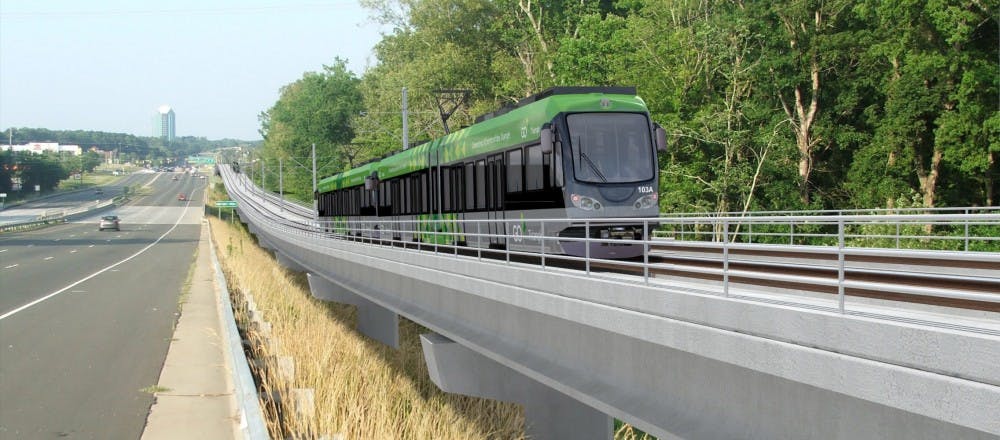On paper, a light rail that would reduce carbon emissions, connect three major universities and allow transportation access to three of the largest employers in North Carolina may seem like a perfect plan, but many citizens have voiced displeasure with the project as costs continue to rise.
GoTriangle has been studying how to implement an effective rail commuter system in the Triangle area since 2010 but has faced obstacles.
In July 2017, the Federal Transit Administration finally approved the Durham-Orange Light Rail Transit Project to move into its engineering phase of the federal Capital Investment Grant Program.
Chapel Hill Town Council member Donna Bell said she has loved the idea of the project since it was first introduced.
“I was first involved in discussions of the light rail when I joined the council in 2010. I love the project. I love the idea of creating regional connectivity that is not dependent of creating wider roads,” she said.
The current plan of the project would result in a 17.7 mile light-rail line that includes parts of Durham and Orange County and will include 18 stations from North Carolina Central University to UNC Hospitals.
GoTriangle expects the project will result in $600 million in new yearly GDP for the state and $175 million in new state and local tax revenue each year.
For the project, GoTriangle has secured $1.25 billion in federal funding, along with $190 million in state funding. To make up the rest of the costs, GoTriangle will have to turn to local and other sources for funding, and if they want the project to remain eligible, they have to act quickly.
GoTriangle must secure all non-federal funds by April 30 in order to remain eligible for state funding. However, this has not been an easy task as the project continues to run into complications and opposition.



